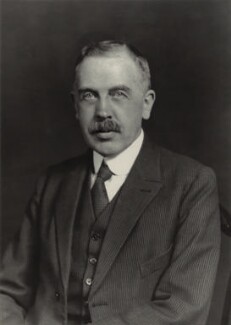H. Stanley Allen facts for kids
Quick facts for kids
Herbert Stanley Allen
FRSE FRS
|
|
|---|---|

Allen in 1931.
|
|
| Born | 29 December 1873 |
| Died | 27 April 1954 (aged 80) Balblair, Ross-shire, Scotland
|
| Nationality | English |
| Citizenship | United Kingdom |
| Alma mater | |
| Known for | |
| Awards | Fellow of the Royal Society, 1930 Makdougall Brisbane prize, 1924 |
| Scientific career | |
| Fields | Physicist |
| Institutions | |
| Doctoral advisor | J. J. Thomson Harold A. Wilson Charles Glover Barkla |
Herbert Stanley Allen (born December 29, 1873 – died April 27, 1954) was an English physicist. He was a very important scientist who helped start early research into X-rays. He worked with famous scientists like J. J. Thomson and Charles Glover Barkla. Allen also helped develop quantum mechanics, which is a big part of modern physics.
Contents
About Herbert Stanley Allen
Early Life and Education
Herbert Stanley Allen was born in Bodmin, a town in Cornwall, England. His father, Richard Allen, was a minister. Herbert went to John Wesley's School in Bath, Somerset.
He later went to Trinity College, Cambridge, a famous university. There, he studied mathematics and earned his degree in 1896.
His Work in Physics
After college, Allen worked at the Cavendish Laboratory. He did research under J. J. Thomson, who discovered the electron. Allen studied how tiny spheres move through thick liquids. This work helped scientists figure out the basic unit of electric charge.
In 1900, he moved to Renfrew and continued his research. He studied how light behaves, especially how it interacts with magnets (called the Zeeman effect). He also looked into radioactivity, which is when atoms release energy.
In 1905, Allen became a lecturer at King's College London. He earned another degree in 1909 for his work on how electricity moves through gases. He worked with Harold A. Wilson and Charles Glover Barkla. In 1919, he followed Barkla to the University of Edinburgh.
Important Discoveries and Ideas
In 1913, Allen wrote a book called "Photo-electricity." This book was one of the first to study how light can make electrons jump off a material. This effect is called the photoelectric effect. It's how things like solar panels work today.
Allen also wrote many papers about the structure of atoms. He looked at how atoms' magnetic properties and the light they give off could tell us about their inside. He supported an early idea about how electrons might be shaped, called the "Parson magneton." This was a very early step in understanding quantum mechanics, a field that explains how tiny particles behave.
Later Life
A fellow scientist, Sir D’Arcy Thompson, once said that Allen was loved by his co-workers and students. He was known for his kind personality and his strong beliefs. Herbert Stanley Allen passed away on April 27, 1954, in Balblair, Scotland.

